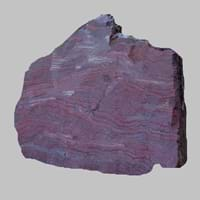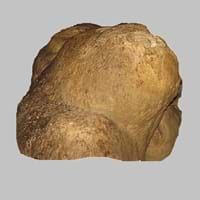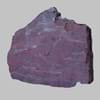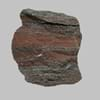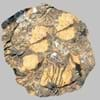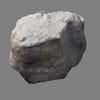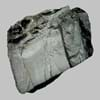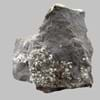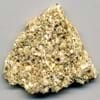Definition
Banded iron formation are distinctive units of sedimentary rock that are almost always of Precambrian age
Travertine is a mineral consisting of layered calcium carbonate formed by deposition from spring waters
Origin
Western Australia, Minnesota
Italy
Discoverer
Unknown
Marcus Vitruvius Pollio
Etymology
From its formation process
From Italian travertino a kind of building stone, from Tiburs, adjective from Tibur (Tivoli), in Italy
Class
Sedimentary Rocks
Sedimentary Rocks
Sub-Class
Durable Rock, Medium Hardness Rock
Durable Rock, Medium Hardness Rock
Group
Not Applicable
Not Applicable
Other Categories
Coarse Grained Rock, Opaque Rock
Fine Grained Rock, Opaque Rock
Texture
Banded, Trellis
Banded
Color
Red, Reddish Brown
Beige, Black, Blue, Brown, Grey, Red, White, Yellow
Durability
Durable
Durable
Scratch Resistant
Yes
Yes
Appearance
Layered, Banded, Veined and Shiny
Fibrous
Interior Uses
Decorative Aggregates, Homes
Decorative Aggregates, Entryways, Flooring, Homes, Interior Decoration
Exterior Uses
Paving Stone, Office Buildings
As Building Stone, As Facing Stone, Paving Stone, Garden Decoration, Office Buildings
Other Architectural Uses
Curbing, Whetstones
Curbing
Construction Industry
As Dimension Stone, Used for flooring, stair treads, borders and window sills.
As Dimension Stone, Building houses or walls, Cement Manufacture, Construction Aggregate, for Road Aggregate, Raw material for the manufacture of mortar
Medical Industry
Not Yet Used
Not Yet Used
Antiquity Uses
Artifacts
Artifacts, Jewellery, Monuments, Sculpture, Small Figurines
Commercial Uses
As a touchstone, Cemetery Markers, Creating Artwork
Cemetery Markers, Creating Artwork, Gemstone, Jewelry, Paper Industry, Pottery
Types
Algoma-type , Lake Superior-type, Superior-type and Taconite
Not Available
Features
Is one of the oldest rock
Stalactites and stalagmites are formed from this rock, Surfaces are often shiny, Very fine grained rock
Archaeological Significance
Monuments
Not Yet Used
Used
Famous Monuments
Not Applicable
Colosseum in Rome, Italy, Sacré Coeur in Paris, France, Trevi Fountain in Rome, Italy
Sculpture
Not Yet Used
Used
Famous Sculptures
Not Applicable
Data Not Available
Pictographs
Not Used
Used
Petroglyphs
Not Used
Used
Figurines
Not Yet Used
Used
Formation
The banded iron layers are formed in sea water when oxygen is released by photosynthetic cyano-bacteria. The oxygen then combines with dissolved iron in ocean to form insoluble iron oxides, which precipitated out, forming a thin layer of banded iron formation on ocean floor.
Travertine is a type of sedimentary rock formed when a river carries or transports pieces of broken rock which then undergo sedimentation. They are then subjected to high temperature and pressure hence forming travertine rock.
Mineral Content
Hematite, Magnetite, Quartz
Calcite, Clay, Feldspar, Micas, Quartz
Compound Content
Fe, Iron(III) Oxide, Silicon Dioxide
Ca, NaCl, CaO, Oxygen
Types of Metamorphism
Not Applicable
Not Applicable
Types of Weathering
Chemical Weathering
Biological Weathering, Chemical Weathering, Mechanical Weathering
Types of Erosion
Coastal Erosion, Wind Erosion
Chemical Erosion, Coastal Erosion, Glacier Erosion
Grain Size
Large and Coarse Grained
Fine Grained
Fracture
Uneven, Splintery or Conchoidal
Splintery
Porosity
Highly Porous
Highly Porous
Luster
Earthy
Dull to Pearly
Compressive Strength
Not Available
Cleavage
Imperfect
Non-Existent
Specific Gravity
5.0-5.3
1.68
Transparency
Translucent to Opaque
Opaque
Density
Not Available
2.71 g/cm3
Resistance
Heat Resistant, Impact Resistant, Pressure Resistant, Wear Resistant
Impact Resistant, Pressure Resistant, Wear Resistant
Deposits in Eastern Continents
Asia
China, India, Iran, Iraq, Oman, Russia, Saudi Arabia, Taiwan, Thailand, Vietnam
China, Russia
Africa
Kenya, Morocco, South Africa, Tanzania
Not Yet Found
Europe
Austria, France, Greece, Italy, Malta, Poland, Portugal, Serbia, Spain, Sweden, United Kingdom
Austria, Italy, Portugal, United Kingdom
Others
Greenland, Mid-Atlantic Ridge
Not Yet Found
Deposits in Western Continents
North America
Canada, Mexico, USA
Canada, USA
South America
Bolivia, Brazil
Argentina, Bolivia, Ecuador
Deposits in Oceania Continent
Australia
New South Wales, Queensland, South Australia, Western Australia
Not Yet Found
All about Banded iron formation and Travertine Properties
Know all about Banded iron formation and Travertine properties here. All properties of rocks are important as they define the type of rock and its application. Banded iron formation and Travertine belong to Sedimentary Rocks.Texture of Banded iron formation is Banded, Trellis whereas that of Travertine is Banded. Banded iron formation appears Layered, Banded, Veined and Shiny and Travertine appears Fibrous. The luster of Banded iron formation is earthy while that of Travertine is dull to pearly. Banded iron formation is available in red, reddish brown colors whereas Travertine is available in beige, black, blue, brown, grey, red, white, yellow colors. The commercial uses of Banded iron formation are as a touchstone, cemetery markers, creating artwork and that of Travertine are cemetery markers, creating artwork, gemstone, jewelry, paper industry, pottery.
